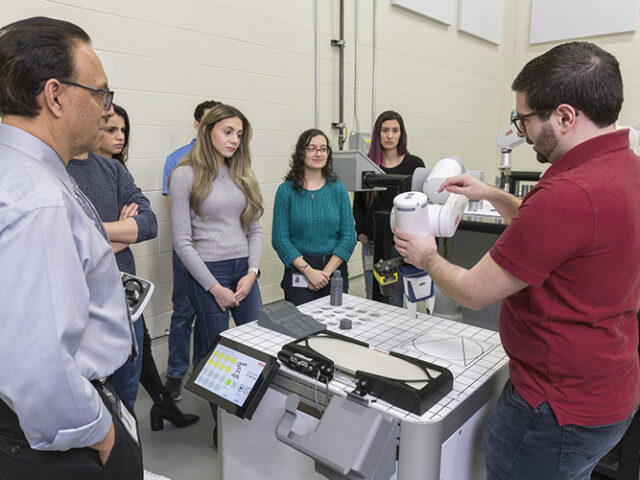Outreach professionals will find it easier to inspire the next-gen from diverse backgrounds to consider engineering as a future career, with the launch of two resources on the Tomorrow’s Engineers website.
The Tomorrow’s Engineers website has been developed by EngineeringUK and brings together free advice and guidance, curated from across the engineering community, to support practitioners in providing young people with engineering careers inspiration and inspire the next-gen of engineers.
‘Engineering your future’ is a new PowerPoint presentation to inspire 14 to 19 year olds to consider a career in engineering. Developed by the Tomorrow’s Engineers careers working group, it explores engineering sectors that are expected to flourish in the future – from big data and life sciences to agricultural technologies and low carbon economy – and profiles different engineers, skills required and routes into engineering.
The Tomorrow’s Engineers careers working group comprises education, outreach, careers, and marketing specialists from the Institution of Civil Engineers, Institution of Engineering and Technology, Institution of Mechanical Engineers, Institute of Physics, Royal Academy of Engineering, UCL Engineering as well as a secondary school teacher.
The second new resource is called the ‘measures bank’ and it is an interactive tool to help researchers evaluate and ultimately improve their organisation’s outreach programme.
Research officer Jess Di Simone said: “Embedding evaluation in your STEM outreach can be a powerful way to improve how future outreach programmes are delivered. There are over 250 example questions in the measures bank repository, which companies can use as a springboard to assess the success of their programmes.
“The measures bank can offer tools for practitioners to collect evidence towards improving their STEM outreach and contribute towards our understanding of what works in different contexts and for young people of different genders, abilities, ethnicities, or socio-economic backgrounds.”
The measures bank features material from EngineeringUK’s research and evaluation surveys, such as the Engineering Brand Monitor, which is an annual survey of young people, their parents and STEM secondary teachers about their knowledge, perceptions and understanding of STEM and engineering.
The questions are organised based on the evaluation target group like young people, parents, and teachers and are grouped in three types of measures – impact, process, and context – and tagged by the topics they intend to measure, for example, careers or demographic information.
Intended as a living resource, the measures bank will be periodically updated as EngineeringUK evaluates more of its programmes and receives feedback and contributions from the STEM outreach community.
Read Jess’s blog on ‘how to measure impact in STEM outreach’ to find out more about the ‘measures bank’.




